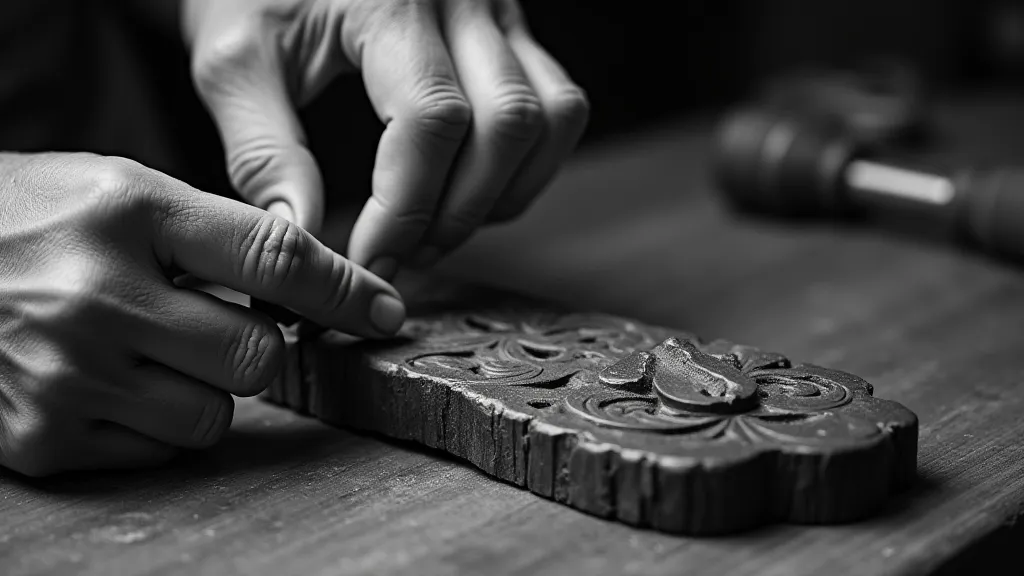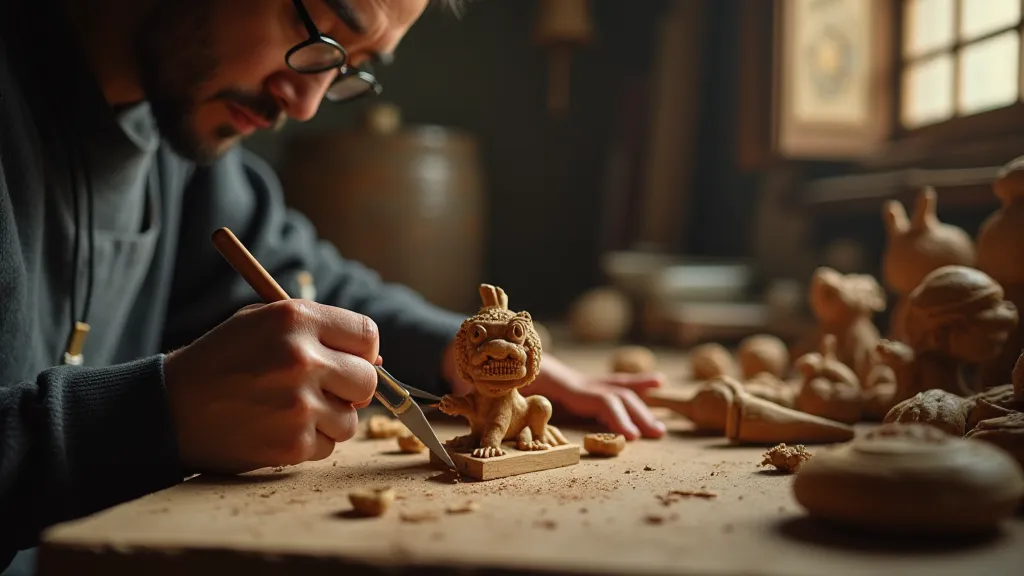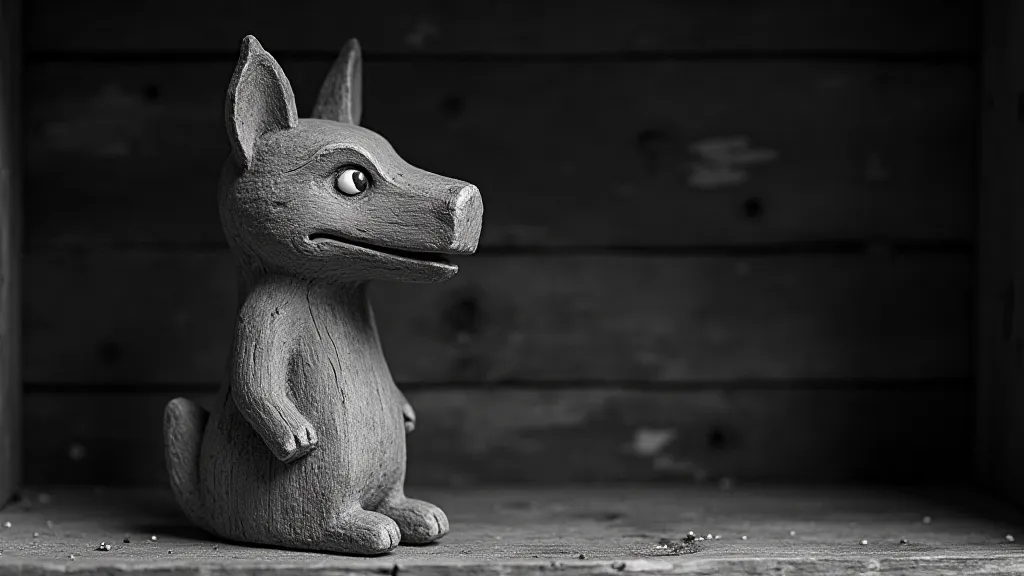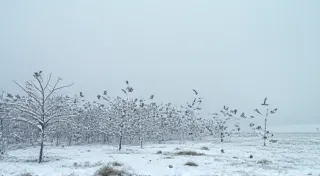The Dance of the Chisel: Muscularity and Precision in Regional Carving Schools
There's a certain romance inherent in the act of carving. It's a conversation between hand, tool, and wood, a patient coaxing of latent beauty from a rough-hewn form. But to truly understand the artistry of wood carving, one must delve deeper than aesthetics, to appreciate the rigorous physical training and deeply ingrained cultural traditions that underpin each regional school. It’s not merely about skill; it's about a legacy of muscle memory, passed down through generations, a muscularity and precision forged in the demands of the craft.
My grandfather, a retired machinist, used to say that true craftsmanship wasn’t about finesse, but about control. He’s seen it in the turning of a lathe, the shaping of metal, and I’m convinced he’s right about wood carving too. The dance of the chisel isn't a delicate waltz; it’s a controlled, powerful exertion, a testament to years spent honing both strength and unwavering focus. Consider the weight of a gouge in your hand – not insignificant – and imagine wielding it for hours, shaping intricate details. This isn’t a hobby; it's a demanding profession.

The Bavarian Tradition: Strength and Stoutness
Let's begin in Bavaria, Germany, a region renowned for its deeply rooted wood carving traditions. Bavarian carvings often depict religious figures, particularly the Nativity scene, as well as folk characters and scenes of rural life. Historically, Bavarian carvers were often farmers or hunters during the colder months, supplementing their income with carving. This connection to the land fostered a certain physicality. Bavarian carving emphasizes strength and boldness. The tools are often heavier, the strokes more forceful. Early training involves substantial chopping and shaping, building upper body strength. Think of the heft of a traditional snow shovel – the same principle applies to the initial stages of Bavarian carving. There's an honesty to the forms, a sense of raw power restrained within a beautifully rendered shape. The deep relief carving common in the region demands a deliberate, unwavering pressure – a physicality that builds character both in the wood and in the carver.
I remember seeing a documentary about a young apprentice in Oberammergau, famed for its intricately carved houses. The sheer physicality of his training was astonishing. He spent hours chopping firewood, not for warmth, but to build the core strength needed to wield the heavier gouges and adzes used in the region’s signature style. The older masters stressed the importance of developing a “solid hand,” a hand that could consistently apply the necessary force without tremor. The selection of wood itself plays a crucial role in this process, with certain species exhibiting qualities that demand specific techniques and a deep understanding of their inherent properties. For those interested in learning more about this fascinating intersection of culture and material, “From Branch to Bearing: The Cultural Significance of Wood Species Selection” offers a comprehensive exploration.
The Kiso Valley’s Delicate Precision: A Counterpoint in Japan
Contrast this with the Kiso Valley tradition in Japan. Here, the focus shifts from brute strength to incredible precision and dexterity. Japanese wood carving, especially the netsuke tradition (small, often whimsical figurines carved to be held in the hand), demands an almost surgical level of control. The tools are smaller, the strokes more delicate, but the intensity of focus and the required dexterity are equally demanding. Generations of carvers developed astonishingly fine motor skills, passed down through rigorous apprenticeship. Imagine the patience required to carve the incredibly detailed faces and intricate clothing found in many netsuke.
The training doesn't involve heavy lifting, but it requires extraordinary hand-eye coordination and a meticulous approach. Young apprentices often begin by carving simple geometric shapes, gradually progressing to more complex designs. The emphasis is on controlling the tool with minimal force, achieving the desired effect through precision and technique, rather than muscular power. There’s a profound beauty in the restraint, in the ability to create such detail with such subtle movements. This is a carving born of quiet contemplation, a testament to the human capacity for refinement. However, even this refinement is not born in a vacuum. The traditions surrounding these art forms are often deeply intertwined with a complex and nuanced understanding of cultural heritage, and sometimes, those traditions have faced considerable challenges. “Fractured Form: The Influence of Colonialism on Indigenous Carving Styles” delves into these difficult but crucial aspects of artistic legacy.

The Black Forest’s Rustic Charm: Blending Tradition and Resourcefulness
Moving to the Black Forest region of Germany, we encounter another distinct style – one that reflects the resourcefulness and practicality of the local population. Black Forest carvings often depict animals, particularly bears, and scenes of rural life. Historically, Black Forest carvers were often self-taught, using readily available tools and materials. The style tends to be more rustic, with a focus on capturing the character and essence of the subject rather than striving for perfect anatomical accuracy. This informality allows for a wider range of physical approaches, although strength is still essential for shaping the larger pieces.
What’s particularly fascinating about the Black Forest tradition is the emphasis on utilizing the natural imperfections of the wood. Knots, burls, and irregularities are often incorporated into the design, adding character and uniqueness. This requires a keen eye and the ability to adapt the carving to the wood’s inherent qualities. This is less about forcing the wood into a predetermined shape and more about collaborating with it, understanding its limitations and celebrating its strengths. It’s a dance not just of chisel and wood, but a partnership, a conversation about form and function. The history and story behind how the tradition began to evolve is deeply intertwined with the land itself, and how people adapted to their environment.
The Appalachian Folk Art: A Legacy of Adaptation
Finally, let's consider the tradition of Appalachian folk art in the United States. This is a melting pot of influences, reflecting the diverse backgrounds of the settlers who migrated to the region. Appalachian carvings often depict animals, human figures, and scenes of everyday life. Due to the often-challenging economic conditions, Appalachian carvers often utilized whatever tools and materials were available. The resulting style is often characterized by its simplicity, functionality, and expressive power.
What’s striking about Appalachian carving is its adaptability. Carvers developed techniques to overcome the limitations of their resources, using whatever tools were at hand – often repurposed agricultural implements – and utilizing readily available wood. The strength required wasn't always about pure muscle power, but about ingenuity and resourcefulness. A broken hoe might become a carving tool, a discarded axe head might be fashioned into a gouge. This fostered a spirit of improvisation and a deep understanding of the properties of wood. The passing of time can often leave an indelible mark on even the most carefully crafted objects, and these changes often influence the overall perception of artistic value and cultural significance. Exploring these nuances requires an appreciation for the ephemeral nature of materiality. For a more in-depth analysis of the interplay between time and artistry, consider “Resonance and Ruin: The Poetics of Decay in Antique Wood Carvings”.

The regional carving schools, though diverse in their styles and techniques, share a common thread: a deep respect for the material and a commitment to preserving a legacy of craftsmanship. Appreciating the physicality of carving, the years of training and muscle memory that underpin each stroke, allows us to truly understand the artistry and the cultural significance of these traditions. It’s a dance of the chisel, a testament to the enduring power of the human hand and the enduring beauty of wood. The legacy of this craft transcends the mere creation of beautiful objects; it represents a connection to the past, a testament to human ingenuity, and a celebration of the natural world. The meticulous artistry and skill required to master the craft are a powerful embodiment of cultural identity and pride. Further investigation into the nuances of the art might reveal that beyond technique, even the tools themselves tell a story – a story about ingenuity, adaptation, and a deep connection to the landscape that shaped the hands that wielded them.





